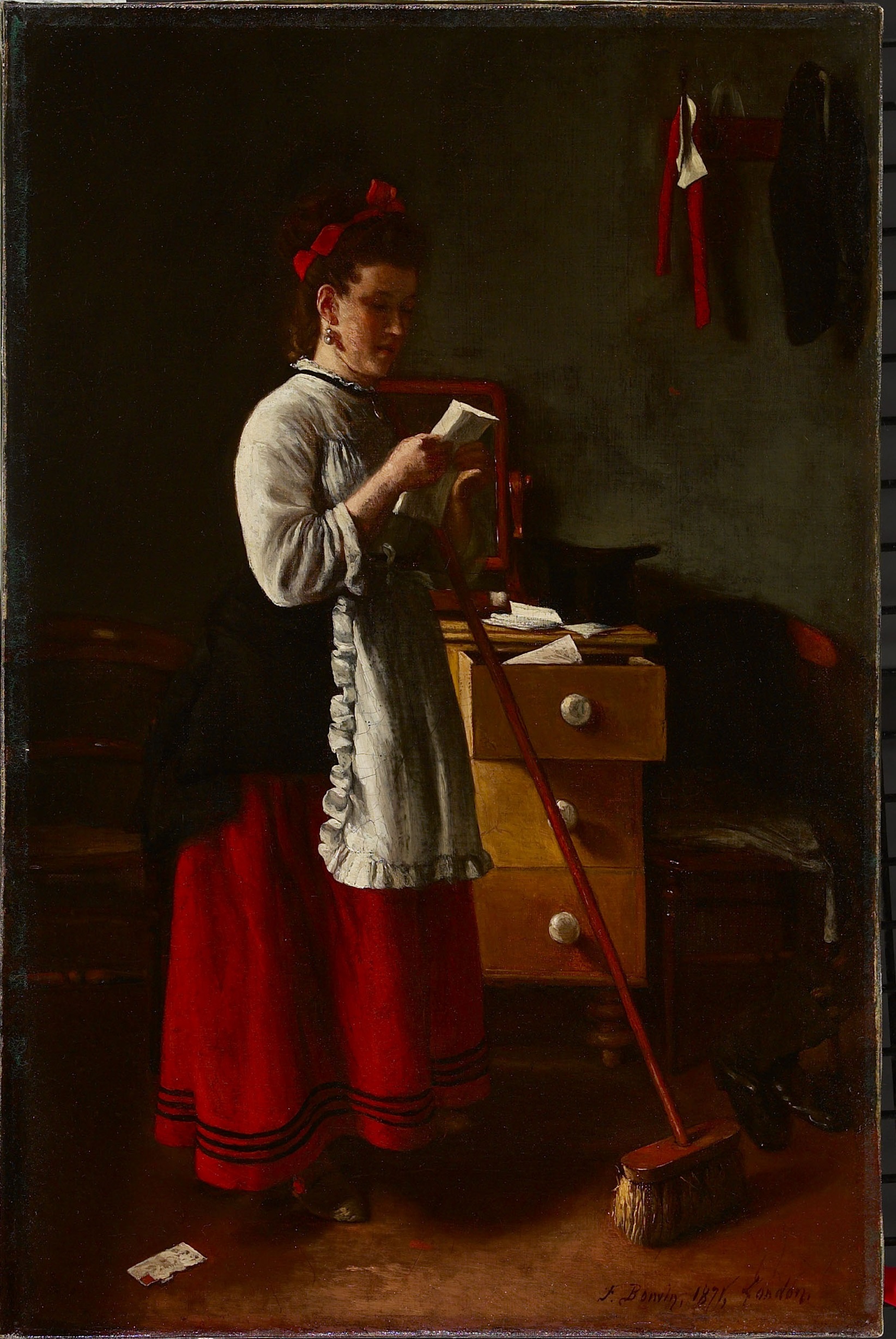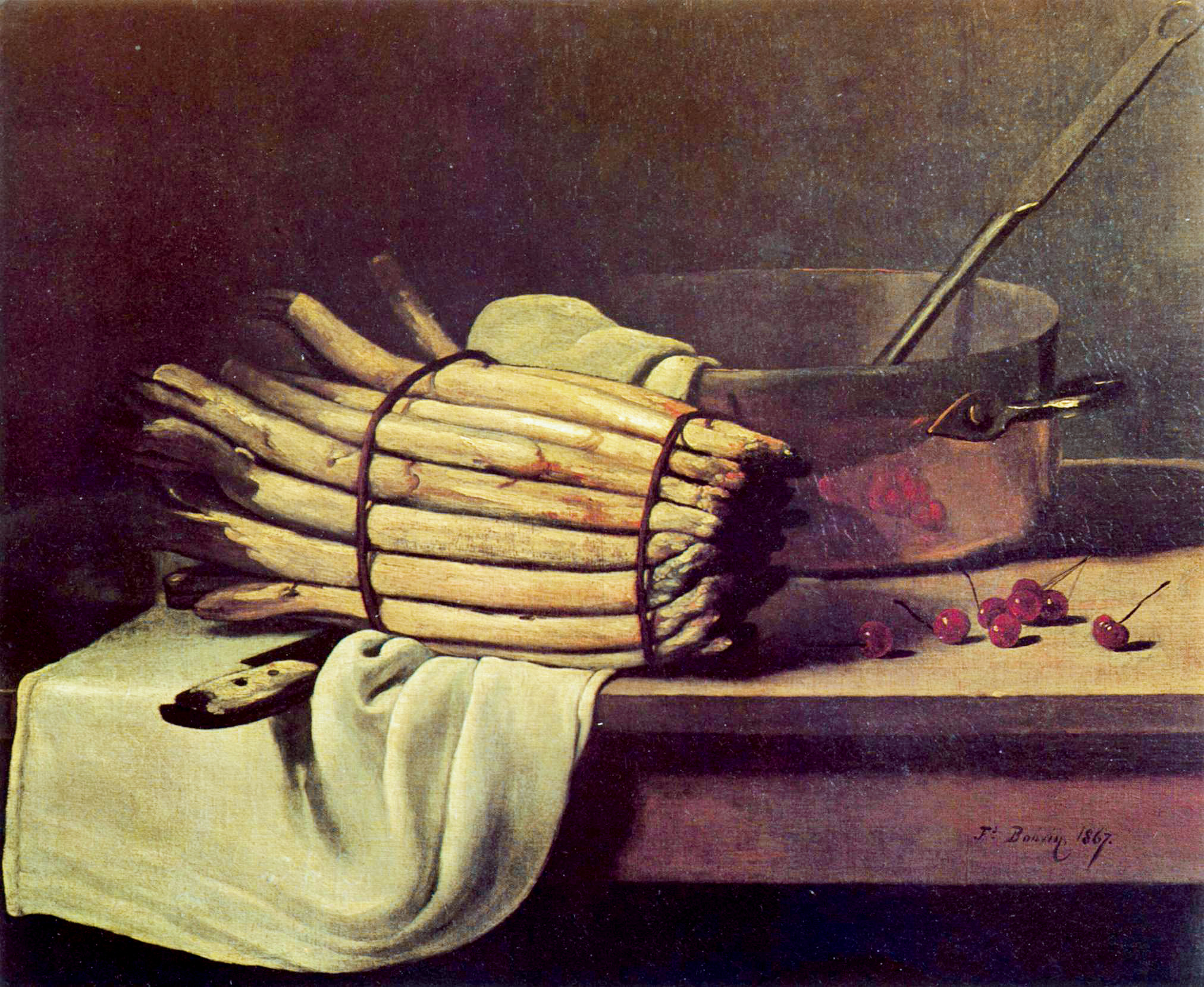A snooping servant - what a compelling subject! There are many paintings featuring housemaids hard at work ironing, sewing, and preparing meals, but it is rare to depict a servant, not only shirking her duties, but behaving improperly.
The Indiscreet Servant was painted by François Bonvin, a Realist artist from Paris. Influenced by Dutch artists of the 17th century, particularly Pieter de Hooch, Bonvin honed his skills by copying works of the Dutch Masters at the Louvre. Like fellow Frenchman Gustave Courbet, the leading Realist artist of the time with whom he was friends, Bonvin renounced romanticized images for unidealized scenes of the working class engaged in everyday activities. He also painted numerous still lifes. Interestingly, while several of Bonvin's works were accepted at the Salon in 1859, paintings by some of his well-known Realist friends and colleagues, including James McNeill Whistler, were not.
Although Bonvin painted other images of domestic workers, this scene appears unique. The broom, propped against the open drawer, and the woman’s apron clearly indicate that she is a servant. However, rather than sweeping or tidying the room, she is engrossed in reading a letter, the envelope discarded carelessly at her feet. The viewer’s eyes are guided around the painting by elements of red: the woman’s skirt, the ribbon in her hair, and a cravat on a hook in the upper right. Light, streaming from an unseen window on the left, illuminates her white blouse and apron and highlights the letter in her hand and sheets of paper on the bureau, yet her face remains in the shadows. There is a hint of mystery and danger. What are the contents of the letter that have piqued her interest? Will she be found out by her master? You, the viewer, can finish the narrative.
- Martina


 François Bonvin
François Bonvin